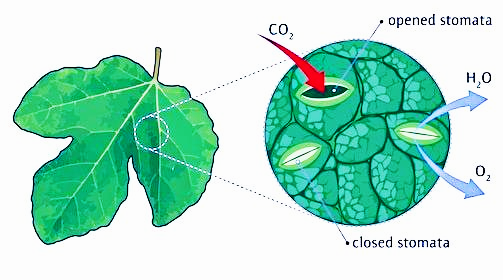
The breathing organ in plants is
A. Lungs
B. Stomata
C. Gills
D. Seeds
Answer
512.7k+ views
2 likes
Hint: Leaves are the most important part of a plant that performs various functions including the breathing mechanism via certain specialized cells.
Complete answer
In the epidermis of the leaves, a small pore is present which is known as stoma or stomata. These organs facilitate the gaseous exchange in the plants and acts as the organs of breathing in plants.
Additional information
- The leaves are the kitchen of the plants where the food is synthesized by the process of photosynthesis.
- Leaves also help in removing excess water from plants through the process of transpiration.
- The leaves consist of stomata having a pore bordered by specialized cells called guard cells which helps in opening and closing of the stomata.
- Through stomata, air enters the plants by gaseous exchange, which contains carbon dioxide and oxygen.
- Carbon dioxide is used in the process of photosynthesis while oxygen is used in respiration.
- The stomata differ according to the plant species, the dicotyledons have numerous stomata in comparison to the monocotyledons.
- Monocotyledons have the same number of stomata on both the upper and lower surface of the leaves.
- In aquatic plants, stomata are present mostly on the upper surface of the leaves.
So, the correct answer is ‘Stomata’.

Note: Stomata was discovered by Pfeffer and named by Malphigii. It is present mostly in the aerial parts of the plants and is absent in the submerged plants because in the presence of sunlight only the stomata open which are mostly during the day time and close at night.
Complete answer
In the epidermis of the leaves, a small pore is present which is known as stoma or stomata. These organs facilitate the gaseous exchange in the plants and acts as the organs of breathing in plants.
Additional information
- The leaves are the kitchen of the plants where the food is synthesized by the process of photosynthesis.
- Leaves also help in removing excess water from plants through the process of transpiration.
- The leaves consist of stomata having a pore bordered by specialized cells called guard cells which helps in opening and closing of the stomata.
- Through stomata, air enters the plants by gaseous exchange, which contains carbon dioxide and oxygen.
- Carbon dioxide is used in the process of photosynthesis while oxygen is used in respiration.
- The stomata differ according to the plant species, the dicotyledons have numerous stomata in comparison to the monocotyledons.
- Monocotyledons have the same number of stomata on both the upper and lower surface of the leaves.
- In aquatic plants, stomata are present mostly on the upper surface of the leaves.
So, the correct answer is ‘Stomata’.

Note: Stomata was discovered by Pfeffer and named by Malphigii. It is present mostly in the aerial parts of the plants and is absent in the submerged plants because in the presence of sunlight only the stomata open which are mostly during the day time and close at night.
Latest Vedantu courses for you
Grade 8 | CBSE | SCHOOL | English
Vedantu 8 CBSE Pro Course - (2025-26)
School Full course for CBSE students
₹45,300 per year
Recently Updated Pages
Master Class 11 Economics: Engaging Questions & Answers for Success

Master Class 11 Business Studies: Engaging Questions & Answers for Success

Master Class 11 Accountancy: Engaging Questions & Answers for Success

Master Class 11 English: Engaging Questions & Answers for Success

Master Class 11 Computer Science: Engaging Questions & Answers for Success

Master Class 11 Maths: Engaging Questions & Answers for Success

Trending doubts
State and prove Bernoullis theorem class 11 physics CBSE

1 ton equals to A 100 kg B 1000 kg C 10 kg D 10000 class 11 physics CBSE

State the laws of reflection of light

One Metric ton is equal to kg A 10000 B 1000 C 100 class 11 physics CBSE

1 Quintal is equal to a 110 kg b 10 kg c 100kg d 1000 class 11 physics CBSE

Difference Between Prokaryotic Cells and Eukaryotic Cells




